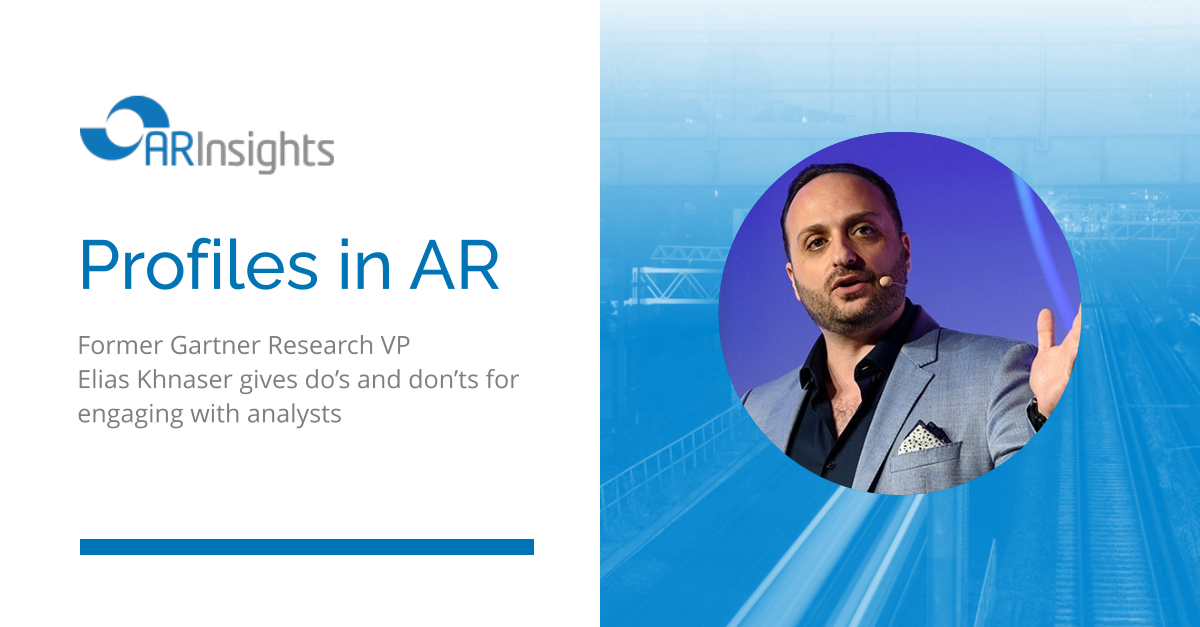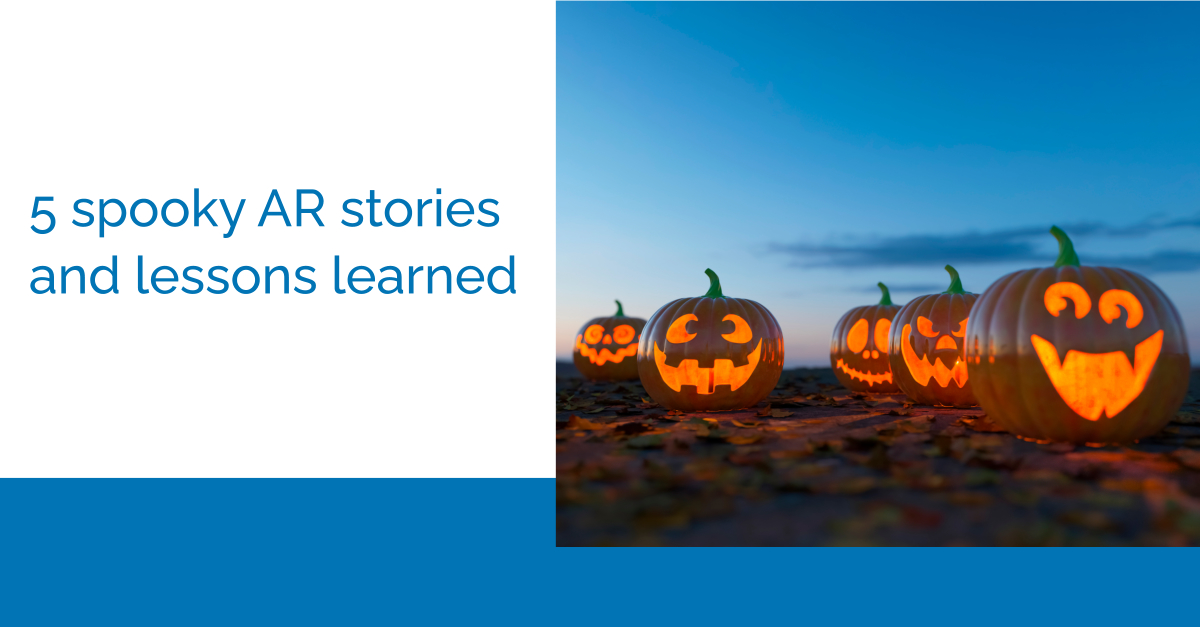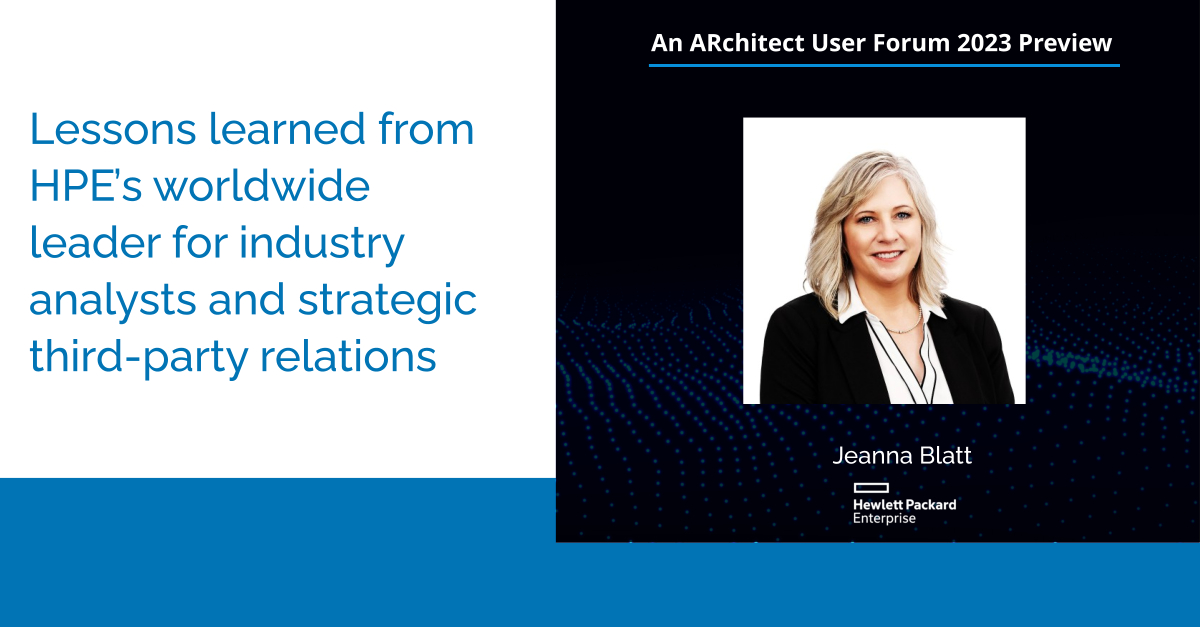Every day, the work of an analyst relations (AR) professional revolves around industry analysts. So, who better to give advice on ways to engage them than an experienced, well-respected analyst himself, with a reputation for excellence and telling it like it is?
The next interview in our “Profiles in AR” series is one we think you’ll be excited about. We recently connected with Elias Khnaser, who some of you may know from his seven years at Gartner (having left the firm last year). He served as research VP, managing the data center infrastructure and cloud research agendas.
A thought-leader in cloud computing and digital disruption, Elias is currently chief of research for EK Media Group. He publishes weekly on his YouTube channel and co-hosts video podcasts including “It Depends” and “Let’s Talk Shop,” dedicated to cloud, data and analytics, and technology trends. Elias has also written six books, dozens of online video training courses, and hundreds of articles for Forbes, InformationWeek and more.
We got such a wealth of information from Elias that we’ll be publishing Part II of his interview next week (covering how to make your company stand out to analysts, what NOT to do during briefings, “secrets for success” in vendor evaluations and more). In the meantime, and without further ado, here are Elias’ insights on engaging with analysts:
Q: What are you up to nowadays at EK Media Group? What kind of research do you conduct?
Elias: I’m doing a mixture of a lot of things, which is actually why I left Gartner — to get that flexibility. So, from a research perspective, I’m continuing to research the public cloud space: strategies; best practices; multi-cloud environments; hybrid cloud; distributed cloud; cost comparisons between different clouds or between the cloud and on-premises environments; exit strategies, should your business ever want to exit the cloud; and more.
I plan to continue publishing in different mediums: blogs, reports, eBooks. There will also be a ton of video, because that’s an easy way to connect with folks and deliver a message.
And then I’m going to conduct a little bit of training too. I used to work with [tech workforce development company] Pluralsight before I joined Gartner and did a lot of their AWS [Amazon Web Services] certification courses — so there will be some of that as well. I’m also working on a book that I’m hoping I can launch at AWS re:Invent in the fall. We’ll see if that pans out. So I’m really doing a little bit of everything!
Q: How can clients work with you today?
Elias: There are multiple ways. I do roundtables, where I’m the facilitator or moderator. I also create content, such as in the form of a video. An important thing to mention is that I have to maintain objectivity. It’s not one of those things where companies say, “Well, since we’re sponsoring it, we control the message.” I’m happy to share my opinions upfront, and if we don’t agree, then we won’t move forward. But it’s one of those things: I will always be objective in the way I work with organizations. And I think customers really appreciate that.
I’m also on retainer with some organizations, where they do a couple inquiries a month with me. These are phone conversations and consultations, such as on messaging or product roadmaps, that range from 30 minutes to an hour.
Q: We’d love to talk about your time at Gartner. How frequently did you work with AR professionals when you were there?
Elias: I worked with analyst relations folks almost daily. They were pretty much my single point of contact for anything I needed from vendors, whether it was: “Hey, I’d like to talk to this person,” or “Here’s what I’m working on; I’m going to need support here,” or “Here’s a document I need review on or validation.” So I have very close working relationships and, now, friendships with AR folks across the board, from multiple organizations.
While I was at Gartner, I worked very closely with analyst relations professionals from AWS, [Microsoft] Azure, Google, Oracle and IBM. They were in my immediate sphere. There were also many more. Most of the AR folks I worked with were in-house, but they were sometimes augmented by third-party support.
Q: In your opinion, what differentiates a good AR professional from a great one?
Elias: I will tell you, I don’t think I ever came across an AR person in my seven years at Gartner that I would say, “Meh, I didn’t like that person.”
What I really, really appreciated from AR folks was that they constantly were trying to improve themselves. Every year, they would have a conversation like, “Hey, what are we doing right?” and “What can we improve on?” They would ask things like, “Are we sending you too many emails?” (There, the answer was often yes. My colleagues and I appreciated fewer emails, and emails in the form of a digest. And if there’s something you really want me to look at, make that stand out.)
So I would say a great AR person is someone who’s willing to listen, who’s willing to take feedback, willing to adjust and willing to learn: “Hey, the way to communicate with this analyst is like this. But for this next analyst, it’s like that…” I think that’s the key part: A great AR person understands the personalities of the analysts that he or she is working with, and adjusts the distribution strategy based on that.
I don’t envy AR people because they’re working with lots of different personalities and often very opinionated people. It can be difficult to feed information to all these analysts in different ways. I think that’s AR’s biggest challenge.
But for the most part, at least from my perspective, analyst relations folks have done a good job at balancing how many emails they send versus how many times a month or a quarter they schedule conversations.
Q: Any not-so-good AR practices or common mistakes you observed? What are some pet peeves analysts may have about AR pros?
Elias: Well, as far as what makes a not-so-good analyst relations person, again, I don’t think I’ve come across one. But I think, similar to sales, in AR, if you’re inundating someone with information, at some point, that becomes numbing. So if an analyst is getting, say, five emails a day from the same contact, they’re just not looking at those emails.
Being overly persistent or too pushy also tends to also be a turn-off, because again, analysts are hired to be opinionated. There’s definitely a way to influence them and help change their minds, but pushing something through with brute force is not usually the best approach.
That’s the delicacy of the analyst relations role, right? Depending on the person who’s in front of you, if you’re aggressive and the other person knows how to absorb that, then the world is great. But if you’re aggressive and the analyst is also aggressive, it tends to have a negative impact.
That hasn’t happened to me, but I’ve seen it play out — especially when there’s disagreement on what’s being written in a report. Sometimes, analyst relations folks may get a little too defensive. I understand and respect that they need to protect the brand they’re representing. But there’s a way to do that. It’s key to master the art of, “Okay, well, we don’t agree; what do we do next?” That’s usually the hardest part.
If you can meet in the middle, that’s great. But other times, AR folks and analysts may be at an impasse. Sometimes, it can lead to escalations and issues. Other AR folks figure out how to deal with it.
That becomes central: What do you do when there are strong disagreements, when both sides are dug in? That, I would say, is another way to differentiate a good analyst relations professional from a great one. A great AR pro knows how to maneuver and how to, at some point, accept what’s going to happen and then build a plan. They may say: “This is going to publish, but let’s see what we can do when this report needs to be refreshed. Let’s get ahead of the game.”
Q: Report outcomes are definitely a hot topic! We’d love to discuss that more. How can AR folks best approach analysts if they disagree with some report conclusions and want to request a change?
Elias: As I mentioned, a great AR person gets ahead of the game. They’d know that, hey, this analyst is going to publish this report at some point this year. They’d say, “Let’s make sure that the analyst has had the right interactions with everyone on our side. Let’s make sure we’ve given them all the data, all the briefings that they need.”
Still, there may be times when an AR person gets a little caught off guard by a report and what’s written, or times when they disagree with something in a report they were expecting. Then, there are a couple things you can do:
First, remember, an analyst is a human being. They can make a mistake. So what an analyst relations person needs to do is separate the opinions in the report from the factual. If there are facts that are categorically wrong — like if the analyst is saying your company doesn’t have a certain feature, when it actually does — then you need to talk with the analyst. Provide the analyst with links and evidence. And if they don’t adjust it, you escalate with their manager and so on. Factual changes are usually the easiest to deal with.
But then, in every report, the analyst also has their assessment, their opinion. And that’s usually the harder area to change or influence — because they’re basing that opinion on their experience with the product, and also on conversations they’ve had with customers throughout the year.
So the best way here — if you haven’t been able to get in front of the situation — is to look at: What do we need to do to change this analyst’s opinion? Who’s the right person they need to talk with? How can we address the concerns, and how do we approach this?
Usually, you’re going to find a person at your organization who can click with the particular analyst, where there’s a really good pairing relationship.
You might not change the analyst’s mind, but you’ll have a dialogue going. The analyst might be saying, “I don’t think your technical support is very good. I’ve heard it from 250 customers.” Now if you pair them with the right executive who’s responsible for technical support, the executive might say, “Look, I appreciate your feedback. But here’s what we’ve done that’s different from what we did last year, and here’s what we’re going to continue to do.” Then in the future, the analyst will have to take some of that feedback into account.
Q: Any tips for building solid relationships with analysts?
Elias: I’ve really appreciated the AR folks who gave it to me straight. Because that’s how I am. And I’ll be honest with you: There are some AR folks I absolutely love. I mean, they’re still friends to this day.
They were the types of people who would come up to me and say, “Look, our company doesn’t do this [capability]. Or we don’t do it well. It is what it is. We’re going to try to improve, but now, we don’t do it well.”
So that honesty — when someone isn’t trying to sugarcoat something or say, “Well, we have this, but you have to take these 10,452 steps to do it” — really builds a solid relationship that I, at least, appreciated. Because if you don’t have something, you don’t have it, right?
The same straightforward approach applies to executives at companies. When I was writing comparative reports, which are always sensitive, I spoke with some executives who had the guts to say, “We don’t do this very well. We’ll accept whatever you guys give us there. We’re going to work on fixing it.” I really appreciated those sincere moments, and they went a long way in relationship-building.
Q: Thank you! This has been so interesting. Lastly, what’s the best way for AR pros and their companies to get on your radar today?
Elias: For newer companies or companies that I haven’t worked with in the past, the best approach would be to provide an introduction: a briefing about the organization, what the product is, and how and if I can help. Like I said earlier, I can help in a couple different ways: whether that’s a consulting engagement where I’m supporting the product roadmap, or deliverables that we work together on.
But the first step, if we’ve never had a conversation, would be to schedule a little bit of time, and give me a company overview. That’s important because then I’ll know if I can help or not. I’ve always prided myself on being very straightforward, so I’ll let you know if it’s in my space — and, if it is, what insights I can bring to the table.
***
Many thanks to Elias for the inside information and advice! If you want to connect with Elias, you can reach him on LinkedIn.
And stay tuned for more of Elias’ insights. Part II of our conversation, where he shares his thoughts on best practices in vendor evaluations, common mistakes during briefings, the future of AR and more will publish next week.




